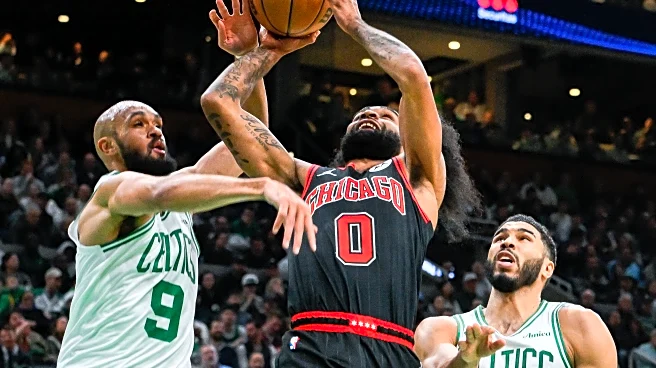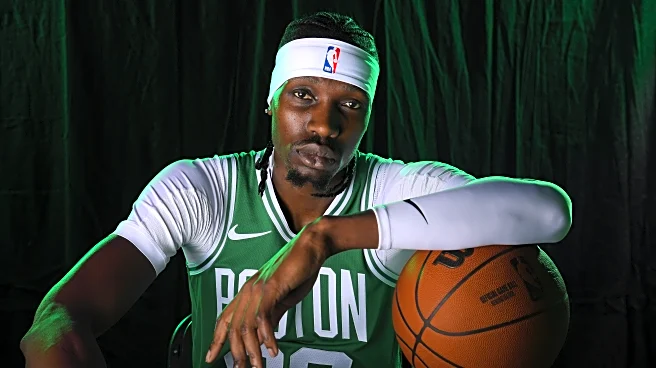What's Happening?
The Boston Celtics are entering the 2025-26 NBA season with significant changes to their roster. After finishing the previous season with a 61-21 record and losing to the New York Knicks in the playoffs, the team has seen the departure of key players such as Al Horford, Jrue Holiday, and Kristaps Porziņģis. Jayson Tatum, a central figure in the team's success, is sidelined, raising questions about the team's ability to compete at a high level. The Celtics have added players like Anfernee Simons and Chris Boucher, but the effectiveness of these changes remains to be seen. The team is also dealing with financial constraints, having reduced their spending significantly to avoid luxury tax penalties.
Why It's Important?
The Celtics' situation highlights the challenges of maintaining a competitive roster under financial constraints. The departure of key players and the injury to Jayson Tatum could impact the team's performance and their ability to compete for a championship. This situation underscores the broader issue of financial management in professional sports, where teams must balance talent acquisition with budgetary limits. The Celtics' decisions could influence other teams facing similar challenges, potentially leading to shifts in how teams approach roster building and financial planning.
What's Next?
The Celtics will need to rely on their remaining talent, including Jaylen Brown and Derrick White, to step up in Tatum's absence. The team's management, led by Brad Stevens, will have to make strategic decisions about potential trades and roster adjustments to remain competitive. The upcoming season will be a test of the team's resilience and adaptability, with the potential for significant changes depending on their performance.











